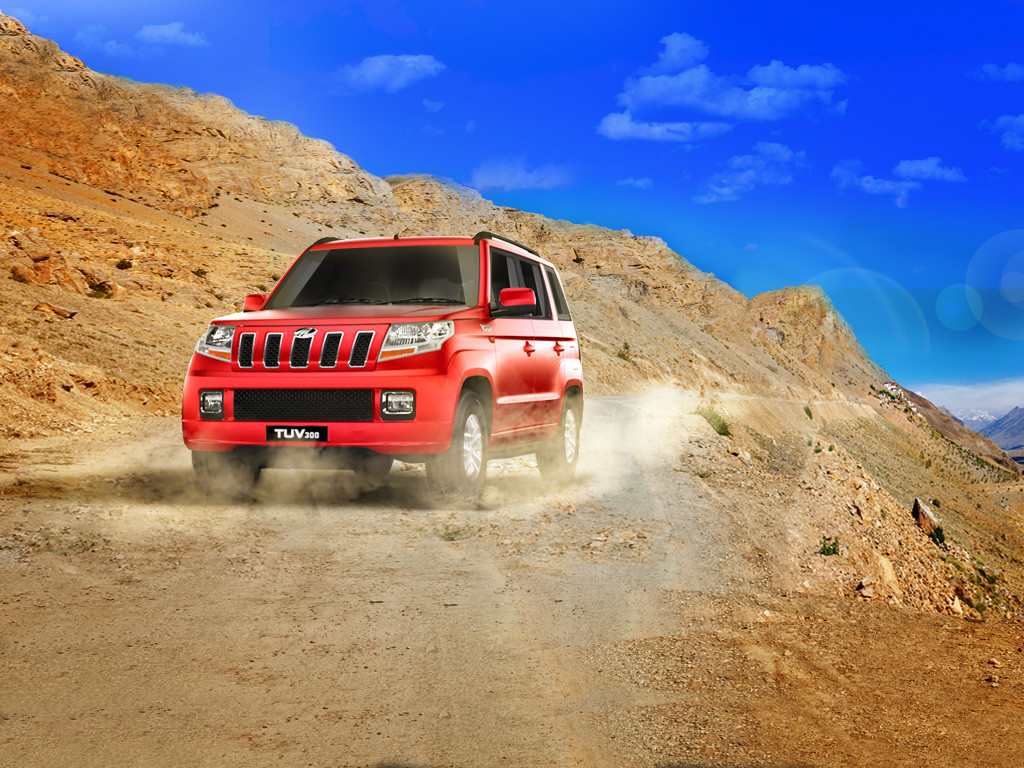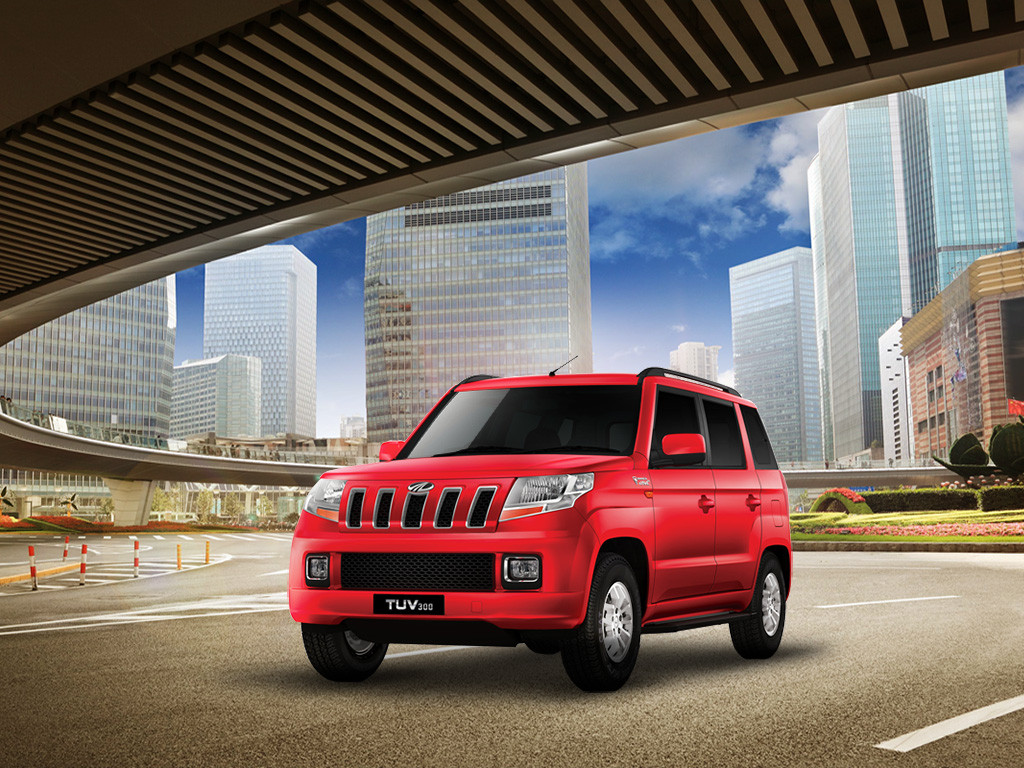Tasting success from its very first product, Scorpio SUV, the home grown auto maker Mahindra conceived various new ideas in the form of SUVs that we see running on roads with Mahindra badge. But there is a catch, most of the Mahindra badged vehicles we see are either Scorpios or XUV500 and some other full-sized UVs.
Unable to leave a mark in the sub-four meter, Mahindra is back with a vengeance, this time it has come up with a well-nigh sub-four meter SUV that is crafted to deliver impressive performance and offers as much as seven seating options inside. As speculated, the car maker has rubbished rumours of TUV300 being a successor to either Bolero or Quanto, they claim Mahindra TUV300 is a new model introduced in the competitive compact SUV segment.
The ‘battle tank’ inspired exteriors are boxy, yes it is indeed boxy but the styling has been done cleverly to keep it simple yet imposing. Also, the sub-four meter SUV does not appear an oversized hatch, again thanks to the design team that worked to make it look full. In front, Mahindra’s signature radiator grille sits carefully flanked by the angular head lamps. As we go down on the front bumper squarish fog lights are fitted and a large rectangular air inlet completes the front look. Chrome has been used scantily on the outside, there is more of black around the window frame and even the roof rails are coloured in black.
Side view has been kept simple, the window frame is a little different from the usual, and there is a gap after first two windows, which means the third one is placed separately. Outside door handles and power adjustable outside rear view mirrors are painted in body colour. Wheel arches are again rectangular in shape ditching the usual round ones. The window beltline and other character lines on the side are not very prominent. Rear is simple too, its gets a set of suave tail lights and a spare wheel mounted on the tail gate.
Cabin is done in style, the beige tone soothes the ambience inside and dual tone upholstery makes up for the lack of brightness. Quality of material used inside, use of plastic on the dashboard, fit and finish all are much better than the other Mahindras, that said it looks even better than flagship Scorpio and XUV500. Seven seat layout is a surprise for this one as there is a confinement for space being a sub-four meter SUV. No, there isn’t a third row, instead two jump seats are fitted behind the second row. Space on offer is decent too, but only in the front, there is ample head and leg room, while it becomes a little uncomfortable for the last two passengers at the back. A larger wheelbase, three row variant could also be rolled out later.
Instrument cluster is twin-pod in shape and centre console is hexapod in shape. Equipment list is considerably impressive; the central console gets a touchscreen infotainment system, steering mounted audio controls and Bluetooth controls, AUX-in, USB port, reverse parking sensors, power windows in front and rear and a couple of others. There is an option for reverse parking camera too but that doesn’t come as a standard fitment, it has to be installed separately. There are numerous accessory packs on offer and a made-to-order combat green shade.
For power generation Mahindra has relied on the Quanto’s 1.5 litre, three cylinder, two stage turbo charger, mHawk diesel motor. The one that does duty in Quanto produces 100 PS but in case of TUV300 this engine will engender lesser power at 80 PS. Torque produced is around 230 Nm and there is no petrol engine options, all seven trims are powered by diesel motor. However, a petrol motor could be launched later.
Fuel economy promised as per ARAI figures is an imposing 18.49 kmpl, agreed the diesel engine is frugal and efficient but the enhanced efficiency is accredit features like start-stop function and eco-mode option which enable improved fuel economy.
The compact SUV segment is overcrowded with options like Renault Duster, Ford EcoSport, Maruti S-Cross and Hyundai Creta. In fact Mahindra considers Honda Mobilio a strong threat to TUV300, although Mobilio is a MPV but falls in the UV space. As for TUV300, it may not have the looks as impressive as rivals but it is capable enough under the hood. Performance is at par with competitors or rather slightly better, interior quality is good too, but the two jump seats behind the second row do not offer comfortable space.
When it comes to building cars for Indian market, pricing is one major concern as customers want everything packed in a good size at an affordable price, albeit changes evident on the buying behaviour the pricing part remains almost unchanged. In terms of pricing, Mahindra has hit the bull’s eye, the base version, mid version and high end trim all are priced competitively. Starting at Rs 6.9 for the base T4 trim, the price bumps a little at Rs 7.25 lakh for the T4 Plus trim, while the T6 is available for Rs 7.55 lakh and T6 Plus is priced at Rs 7.80 lakh. As we go up in the range the T6 AMT is tagged at Rs 8.25 lakh, range topping T8 is available for 8.4 lakh and finally its AMT version T8 AMT is out for sale at Rs 9.12 lakh (all priced mentioned above are ex-showroom Pune prices).
Story Source:
Shubhananda Bera from AutoPortal.com




